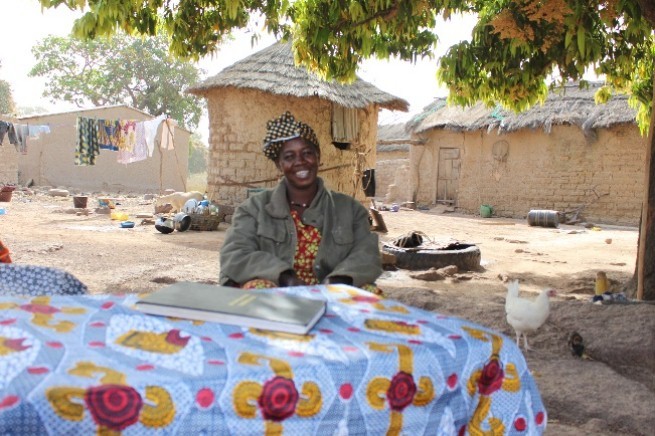
April 2017—Rice growing is a tradition in Mali that dates back more than 1,000 years. Kalia Koné from Kongolikoro village in the Sikasso region in southern Mali has been growing rice for more than 15 years. But traditional rice planting practices were not resulting in good yields.
Women from the village planted rice by scattering seeds on their fields, and they did not use any fertilizer, resulting in scant harvests. As rice production is a major source of income for families here, profits from rice sales were barely covering basic household expenses.
In 2013, the joint Feed the Future and USAID Cereal Value Chain Project began working with rice farmers in Kongolikoro to help them improve production and sales. With support from the project, 141 female rice producers organized themselves into the Sini Gnèsigui Cooperative. Initial training with this group focused on literacy, group management, and rice-specific agricultural practices. In 2014, the cooperative received more training on how to produce organic fertilizer, improve water management, and form business relationships with suppliers and financial institutions.
Feed the Future is the U.S. Government’s global hunger and food security initiative.
Before the training, cooperative members could barely harvest one bag of rice over an area of 0.75 hectares (1.8 acres). With their newly acquired skills and knowledge, members can now easily produce 25 bags. Due to this success, the Sini Gnèsigui Cooperative received a loan allowing them to buy fertilizer, improved seeds and pesticides. Bulk sales have also allowed the cooperatives to negotiate a higher price for their rice, improving profits for members.
“Today, I eat rice three times a day, and I have savings that benefit my entire family. This is all thanks to the USAID project,” said Koné, who is a member of the Sini Gnèsigui Cooperative.
“We don’t have enough words to thank the Cereal Value Chain project. Our production has drastically improved, our living conditions are better, and prospects are good,” said Mama Diarra, another cooperative member.
While many women were skeptical of change in the beginning, more and more women are now applying these new practices. The project works to harmonize hunger and poverty efforts in battling chronic food insecurity by focusing on staple cereals—millet, sorghum and rice—in Mali. In 2016, over 13,000 women applied their new skills and know-how to fatten wallets as well as the bellies of children and families.
LINKS







Comment
Make a general inquiry or suggest an improvement.